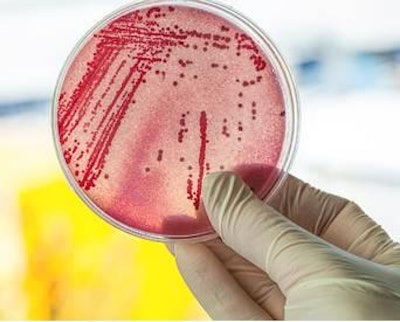
Organic acids are naturally-occurring compounds with acidic properties that are present in the gastrointestinal (GI) environment as products of microbial fermentation. Organic acids have antimicrobial properties, which have been employed for many centuries for food preservation purposes. The potential for more specific application of organic acids in farmed animals arose in the 1960s, when organic acids were found to be particularly effective against Salmonella. The interest in using organic acids for farmed animals has increased significantly in recent decades due to the desire to reduce foodborne pathogens of animal origin and the global reduction in the use of antibiotics as growth promoters, driven primarily by the European Union ban of 2006.
Probiotic
Probiotics can be defined as live microbial feed supplements that affect the host by improving its intestinal balance. Most probiotic preparations consist of lactic acid bacterial (LAB) strains, which are Gram-positive, acid-tolerant bacteria that produce lactic acid (an organic acid) as a major metabolic end-product of carbohydrate fermentation. To successfully colonize the intestine and be effective, probiotics must successfully traverse and survive the extreme acid stress provided by the very low pH of the upper part of, or organic acids throughout, the GI tract.
Organic acids and microbes
The antimicrobial effects of organic acids have been well documented. The uncharged, undissociated portion of the acid is believed to diffuse freely across the microbial cell membrane. At a higher pH, more of the acid is dissociated (ionised). Thus, once in the higher, more neutral pH of the cell cytoplasm (typically pH 7) than acidic parts of the intestine, the resulting H+ ions acidify the cytoplasm, stressing the pH regulatory mechanisms of the cell, whilst the now negatively charged portion of the acid also accumulates in the cell. Both disrupt cell physiology and metabolism; for example, through denaturing and causing oxidative damage to proteins/enzymes, energy expenditure, osmotic stress and compromising membrane integrity/function, all of which inhibit growth and/or lead to cell death.
The antimicrobial activity of organic acids is, however, often considered too superficially. The degree of activity is dependent on the specific acid and microbe under consideration. Microorganisms have various strategies to cope with acid stress including minimizing membrane permeability to hydrogen (and other) ions, buffering the cytoplasm and ion pumping mechanisms. Organisms attempt to maintain a constant cytoplasmic pH (often near neutral) as this will be the optimum pH for their cellular metabolic apparatus (e.g. enzymes). However, the absolute, ability to maintain and tolerances of shifts in this pH will vary from microbe to microbe.
Organic acids and probiotics
Given the antimicrobial activity of organic acids, the question is sometimes asked about the compatibility of organic acids with probiotics. The types of bacteria (e.g. LAB) that are frequently used as probiotics have a disposition to produce (lactic and other organic) acids and thus exist in relatively low pH ("preservative") environments that tend to be inhibitory to most pathogenic microorganisms. Thus, it is apparent that these types of bacteria are more tolerant of low pH and organic acids. Clearly, it would be a somewhat self-defeating scenario if LAB-type bacteria were not relatively resistant to their metabolic products and thus the environments they contribute to/reside in. In fact, it is believed that LAB bacteria attempt to create this type of hostile environment to give themselves a competitive advantage over other microorganisms. The historic use of fermentation/preservation via the selective growth of some bacteria at the expense of others is, in itself, clear proof of this differing susceptibility to organic acids/low pH.
When comparing the antimicrobial activity of organic acids in vitro, using minimum inhibitory concentration tests (MIC), Table 1, we can see that an organic acid (in this case formic acid) needed to be over 10 times more concentrated to inhibit the Lactobacillus species than for Escherichia coli. It is also interesting that the MICs were identical for the two Lactobacillus species.
Conclusion
The benefit of probiotic use can sometimes be unclear, whilst the efficacy of organic acids is widely accepted. It is clear, however, that the combination of organic acids and certain acid-resistant probiotics could be extremely advantageous and would help promote the full benefit of the probiotic -- the acids will reduce the "detrimental" bacteria, whilst supporting the proliferation of the probiotic and other "beneficial," acid-tolerant bacteria in the GI tract.















